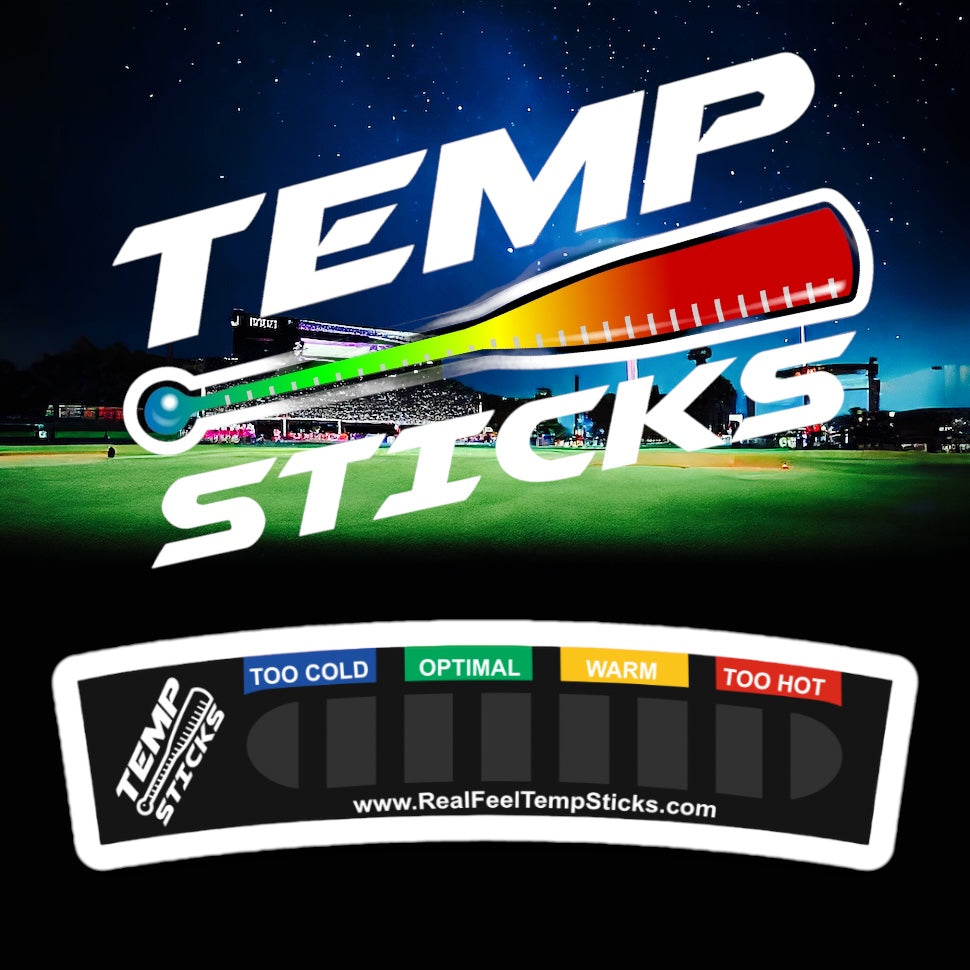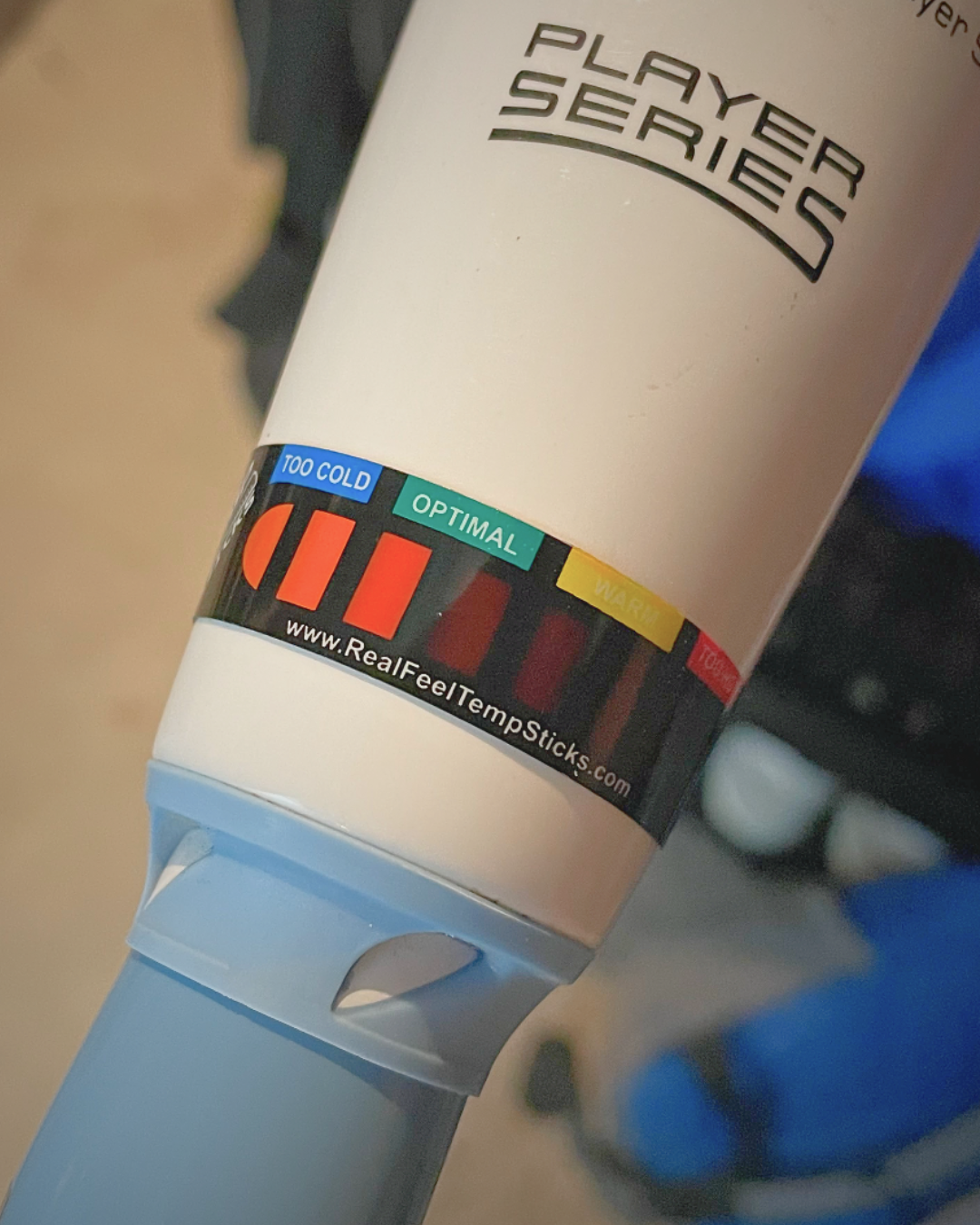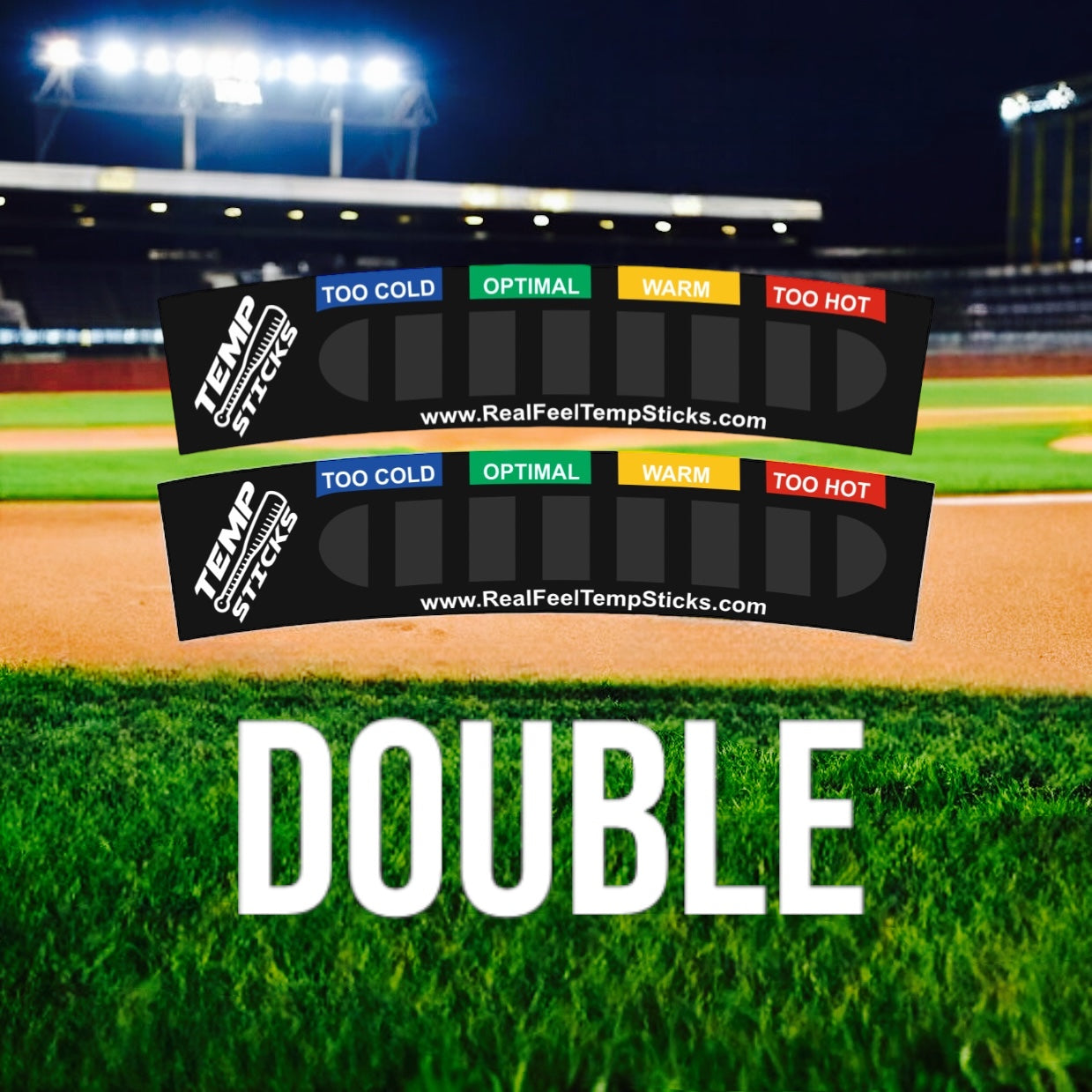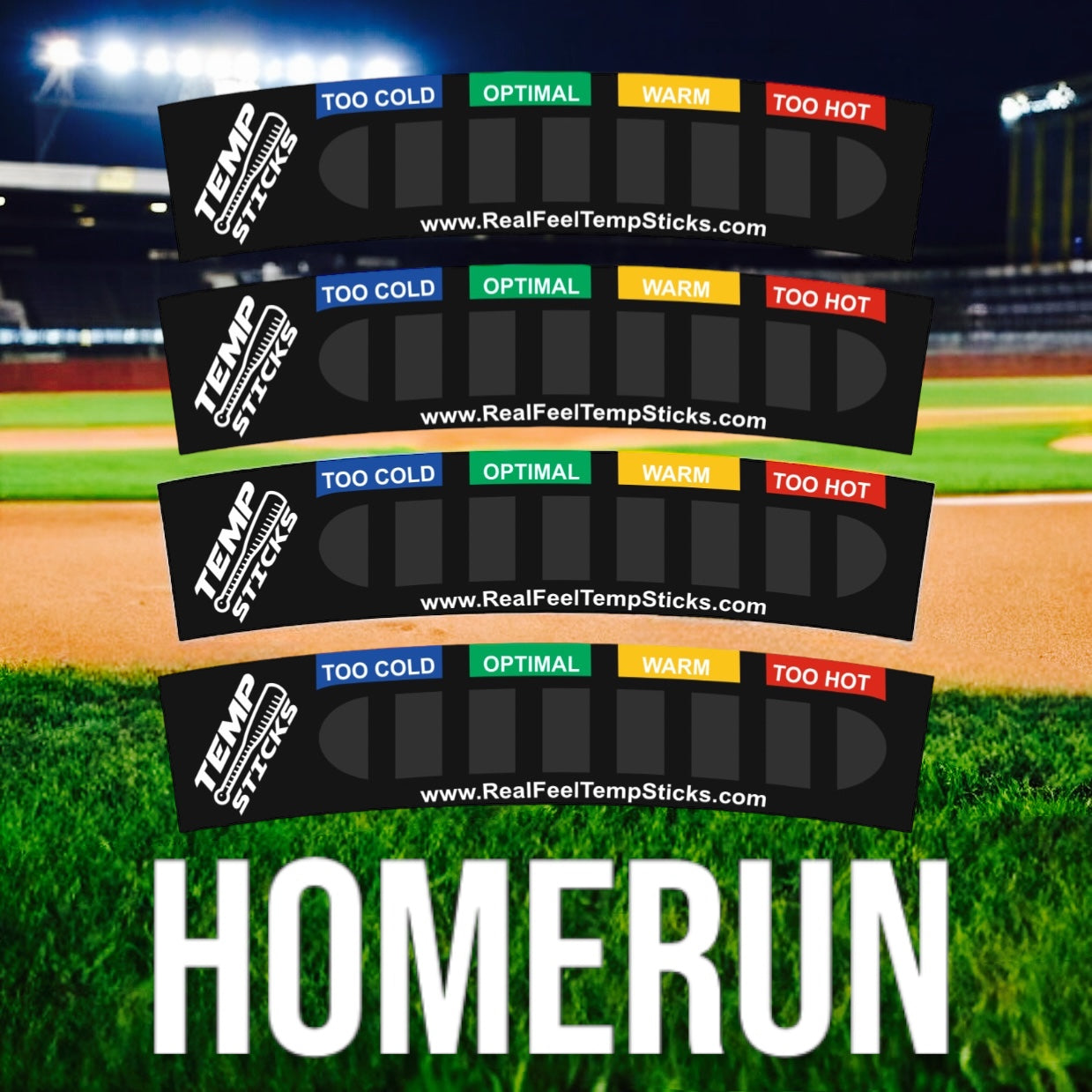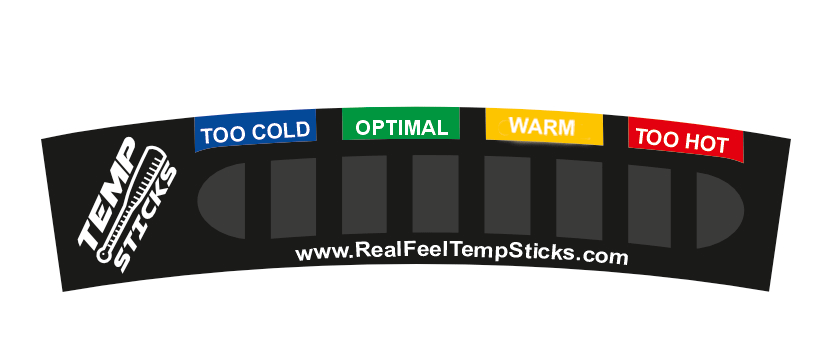🇨🇦AVAILABLE IN CANADA🇨🇦
TEMP STICKS NOW AVAILABLE IN CANADA! Please see link below for check out!
Real Feel Bat Temperature Stickers
PROTECT. OPTIMIZE. PERFORM.

Experts across the industry agree—temperature matters when it comes to bat performance and durability. Major bat retailers and manufacturers consistently warn against using composite bats in temperatures below 60°F, as the cold makes composite bats more brittle and more prone to cracking. They also emphasize the importance of proper bat storage, advising against extreme heat or cold, which can weaken a bat’s structure over time.
With so many industry experts warning against the dangers of extreme temperatures, how do you know when it’s safe to swing?
Real Feel Temp Sticks take the guesswork out of protecting your bat. These patent-pending, temperature indicators provide a clear, instant reading, so you always know when conditions are optimal for play.
• Avoid unnecessary bat damage by knowing exactly when it’s too cold to use your bat.
• Maximize bat performance and lifespan by ensuring you stay within manufacturer-recommended temperature ranges.
• Simple, effective, and easy to use—just stick it on your bat and play with confidence.
Don’t risk damaging your bat—trust the proven science behind temperature control!

1
/
of
11
Real Feel Sports
Real Feel Temp Sticks - 50% OFF!
Regular price
$4.99 USD
Regular price
$9.99 USD
Sale price
$4.99 USD
Unit price
/
per
Shipping calculated at checkout.
Share


